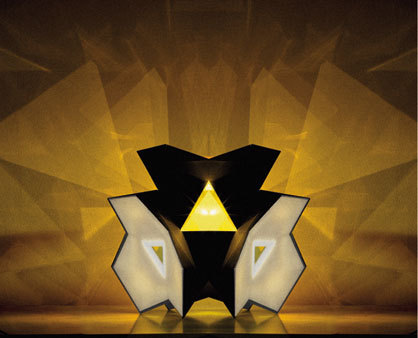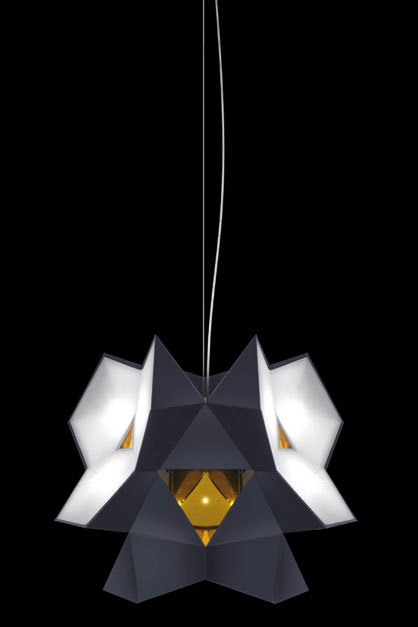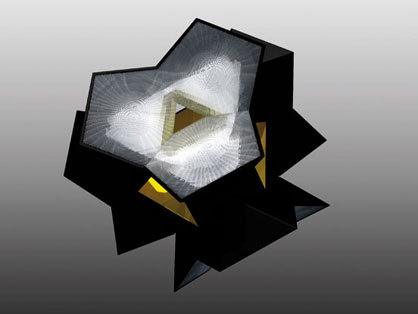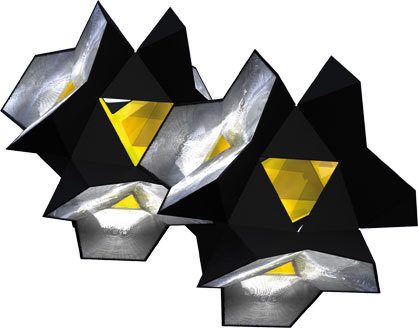Starbrick
Scritto da Zumtobel Lighting
Dornbirn, Austria
07.07.09
The Starbrick is an experiment with light modulation and space.
The Starbrick is an experiment with light modulation and space.
Olafur Eliasson: "In my studio, we initially focused on the spatial challenges involved in the shaping of a complex geometric brick. This led to the development of the star-shaped modules, based on a stackable principle, which produce three types of space: the solid structure of the module itself, the negative space at its core in the shape of a ‘cubeoctahedron’, and the polyhedric spheres that appear between the modules when stacked. During recent years, my studio has conducted a number of light experiments in collaboration with Zumtobel. In one such experiment, we decided to test different qualities and hues of LED light, placed within the individual modules, which eventually resulted in the current Starbrick.
The Starbrick consists of injection-moulded polycarbonate components with a matte black finish.
The Starbrick’s LEDs are organised to emit white light while also creating a luminous, yellow and kaleidoscopic core in the shape of the cubeoctahedron. The body of the module consists of two kinds of polycarbonate: a translucent type optimises the quality of the light from the LEDs; an opaque and durable type makes up the body of the module, its matte black surface counterbalancing the light volumes. When you stack the Starbricks, the opaque surfaces are reduced, to the point where the white light generates the polyhedric spheres between the bricks. Since the LEDs are dimmable, the module has various light settings, offering both functional and ambient light.
The semi-transparent, yellow, reflective surfaces at its core are backlit by LEDs.
I have attempted to develop a module that, while functioning as an object in itself, can also be assembled to form multiple basic architectural elements such as walls, whether freestanding or integrated into an overall structure, suspended ceilings, columns of all shapes, sizes and volumes – theoretically, you could build an entire luminous house out of Starbricks! The expandable principle is a generous one that makes it possible for people to buy a lamp system that can be related to its surroundings. Depending on the context, you can change and rebuild the system; whether in a small study or a concert hall, the module can be used as an architectural building unit, merging light and volume.
The light from the outward-facing LED Boards is concentrated and evenly distributed via polycarbonate refractors.
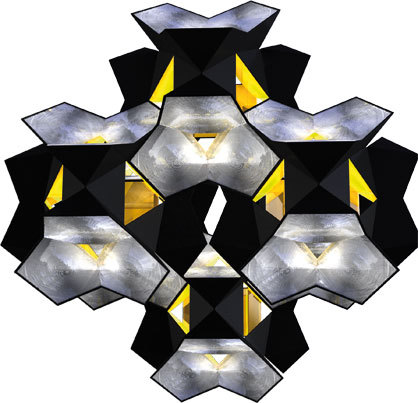
The light from the outward-facing LED Boards is concentrated and evenly distributed via polycarbonate refractors.
×The Starbricks can be assembled into groups of any size and combination, developing in different directions.
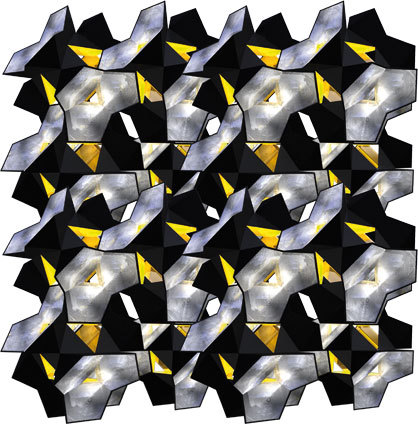
The Starbricks can be assembled into groups of any size and combination, developing in different directions.
×By further developing the current prototype with Zumtobel, I hope to be able to offer this light module for everyday use and living. It poses questions that are central to both contemporary art and society: how does light define space? What politics of light infuse our immediate surroundings?"
The basic structure of the Starbrick is a cube on whose six surfaces additional cubes have been placed at a 45° angle. These additional cubes serve as connectors so that several Starbricks can be conjoined.
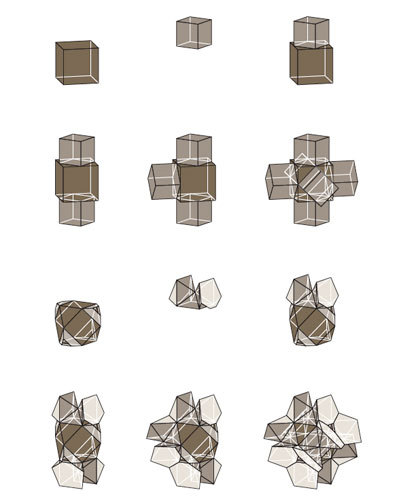
The basic structure of the Starbrick is a cube on whose six surfaces additional cubes have been placed at a 45° angle. These additional cubes serve as connectors so that several Starbricks can be conjoined.
×
